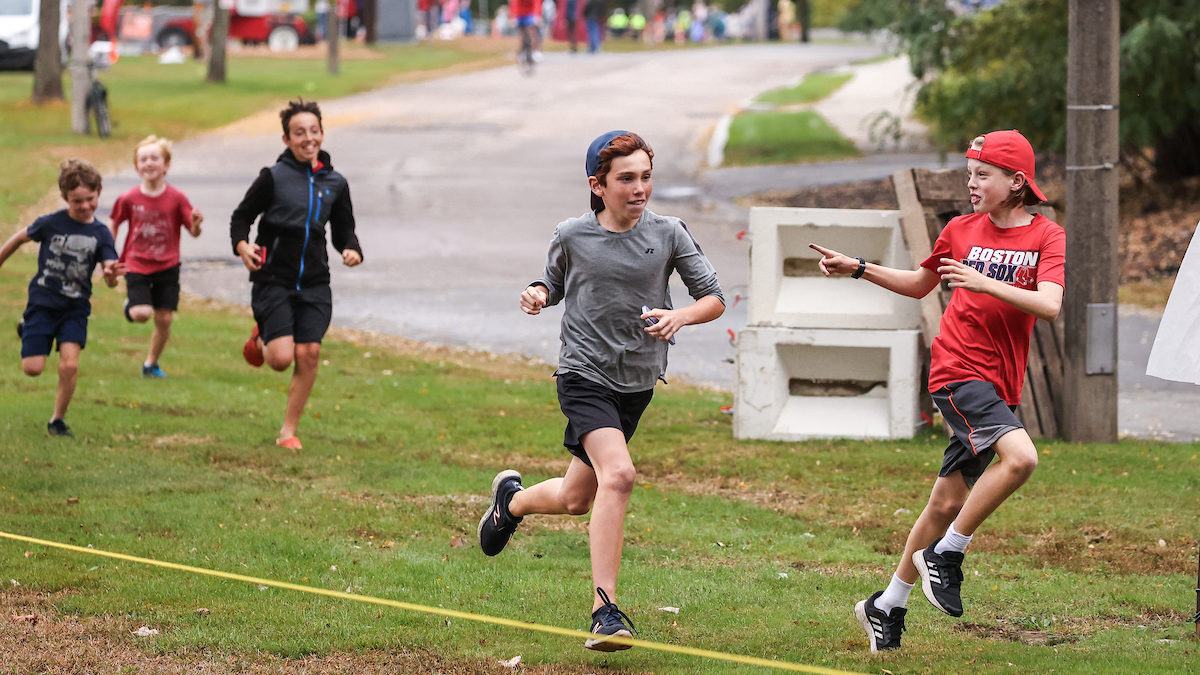Coaching kids: how to introduce children to running
Elementary phys ed teacher and London Western junior development coach Amanda Truelove on how to inspire kids and create lifelong athletes
 Photo by:
Kevin Morris
Photo by:
Kevin Morris
The benefits of sports for children are well understood. Sports, including running, foster healthy habits, promote physical fitness, instil discipline, cultivate mental resilience, encourage social interaction and enhance cognitive abilities. But how do you instil a love of running in children, and introduce them to the sport in a healthy way? London, Ont.’s Amanda Truelove, an elementary health and phys-ed teacher and junior development coach with the London Western Track and Field Club, explains how to give kids the right start so they can benefit from running and sports for the rest of their lives.

As a teacher and coach, her primary goal is to place fun at the forefront of the program. “Our club wholeheartedly believes in following Athletics Canada’s Long Term Athlete Development Model to ensure the proper management of youth and adolescent growth and development, which ultimately help all athletes reach their full athletic potential,” says Truelove. “I strive to develop in my students the physical literacy skills, competence, and confidence to participate in physical activities that spark their interest and inspire them to be active for life.”
The program exposes kids to all events in track and field, including jumps, throws, sprints, hurdles and endurance. This approach helps their athletes develop physical skills that form the foundation for all other sports, not just turn them into track and field athletes. Truelove and her fellow coaches believe that specializing in one sport at a young age is counterproductive for a child’s athletic development.
Many of the kids Truelove coaches, as well as their parents, have long-term goals of competing at the elite level, but she tried to instil in her athletes and their parents the importance of playing the long game, encouraging multisport participation and allowing athletes to pursue their interests. They try to create a fun, safe environment while encouraging intrinsic motivation, which she says is the key to long-term success. She cites a quote from performance coach and author, Steve Magness, to explain her coaching approach: “If a kid is going to be good or even great at something, they’ll figure it out.”
“The fire has to come from within,” says Truelove. “Make sure kids are participating because they enjoy it and want to be there, as opposed to feeling like they have to, cultivating a “want to vs. have to” mindset. It’s easy to kill motivation and a lot harder to build it.”
How much should kids be running?
Just like adults, kids can vary widely in terms of their capabilities and skill levels, but in general, parents and coaches should monitor the volume of running kids are doing, ensuring age-appropriate increases to prevent burnout.
London Western Track Club follows the Run, Jump, Throw program, which aspires to teach agility, balance, co-ordination and speed, with practices twice per week. As athletes age, the focus shifts from fundamentals to learning to train. Athletes at this stage continue to enhance their physical literacy skills while being introduced to event-specific workouts, including an introduction to a proper warm-up, cool-down, and the importance of mobility and nutrition. These athletes train three times per week, and Truelove and the other coaches continue to encourage participation in other sports.

Keep kids motivated by promoting fun
Truelove emphasizes the significance of providing age and skill-appropriate challenges to children, ensuring they are “just right” to maintain their motivation. A challenge that is too far beyond their current ability will likely discourage a child and cause them to disengage from running. She also likes to set up individual goals with her athletes. “Having individualized goals for each athlete further motivates them by providing a sense of direction, a purpose and something to strive toward,” says Truelove.
In addition to ensuring the kids have fun, Truelove emphasizes how crucial it is for coaches to be mindful of the influence they have over their athletes. “Providing a positive experience in a safe, inclusive, and fun environment is key to keeping kids engaged and motivated to pursue sport,” she says. “These coaches play a crucial role in guiding athletes through a critical stage of development. It is essential to acknowledge the significance of long-term health, happiness, and success, as well as fostering a healthy approach to sports participation.”

Finally, Truelove uses sports to teach valuable and transferable life skills to her athletes. “Learning how to lose is just as important as learning how to win,” she says. “Teaching kids how to process, learn and grow from failure fosters resilience and perseverance–key attributes to health, happiness, and success.”
Are you interested in getting your child involved in track and field? Check out the Athletics Canada website to find a club near you.


